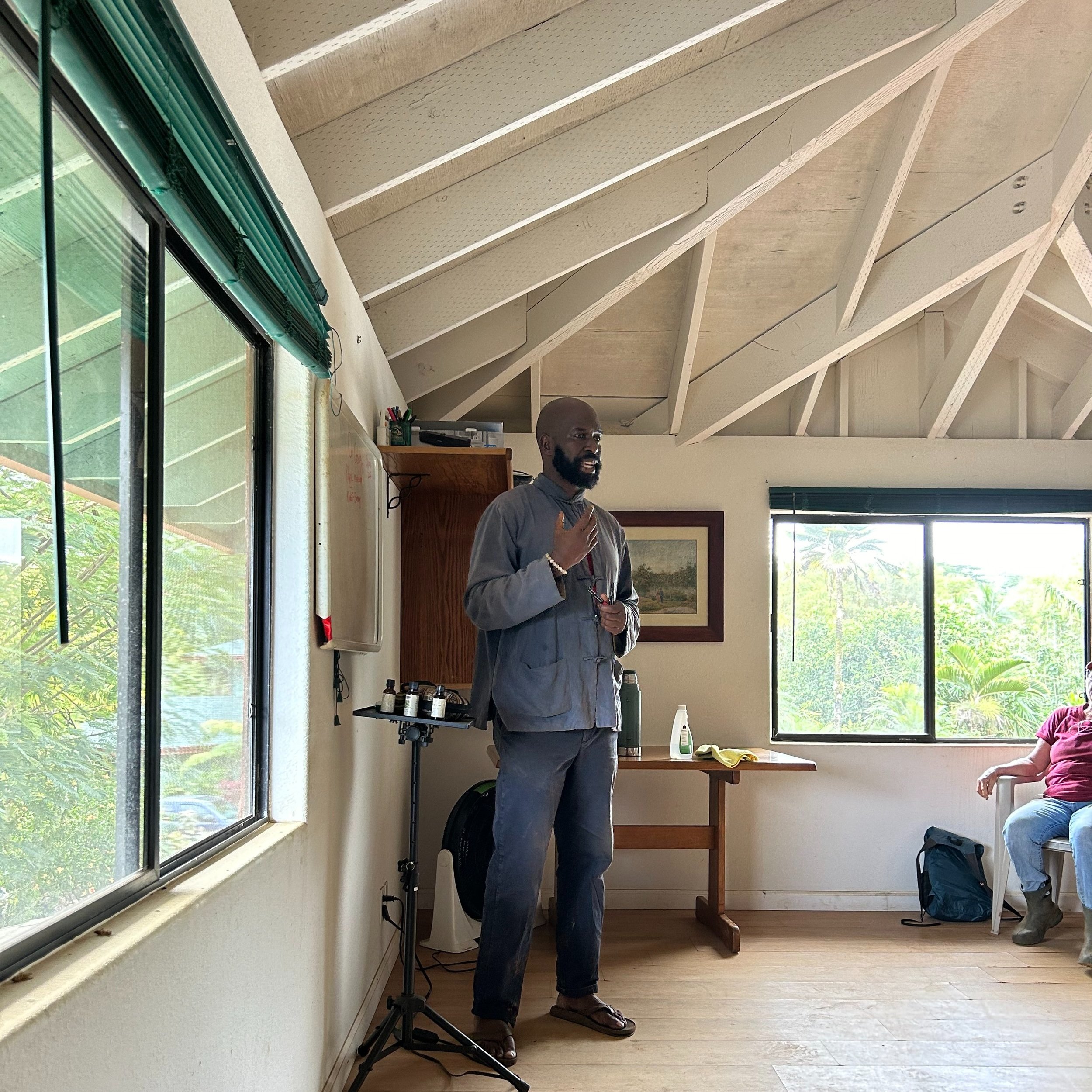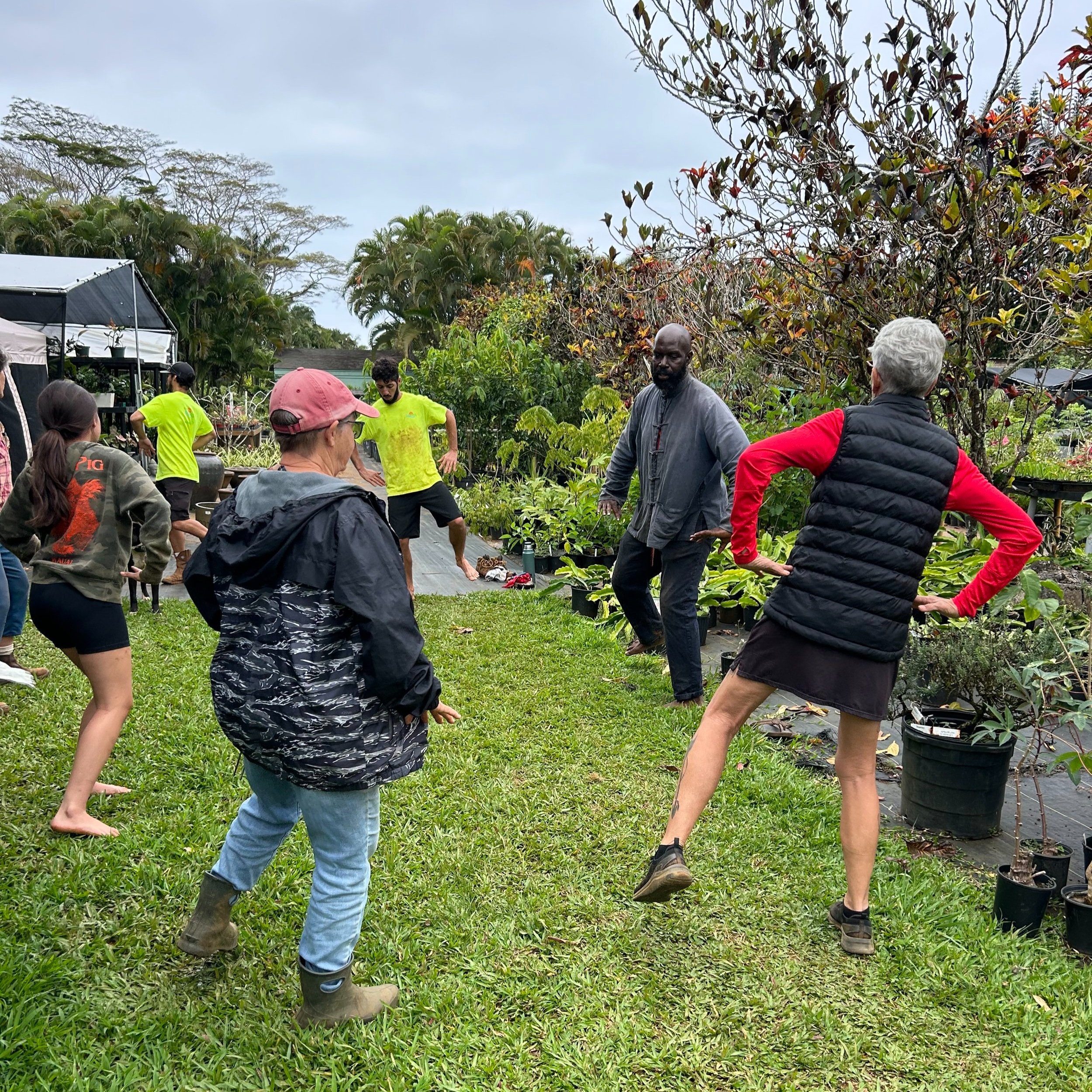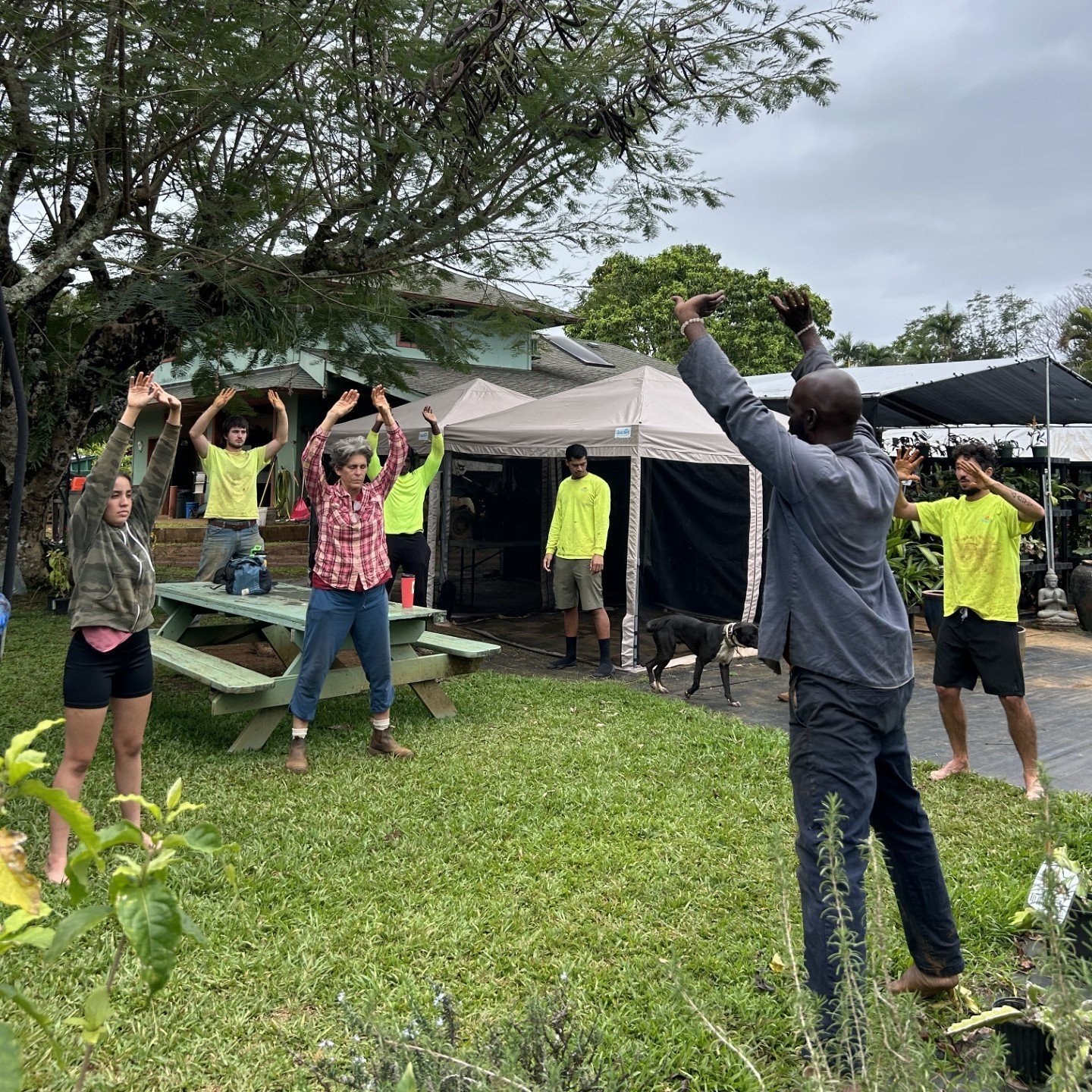Energy in the Nursery: A Lesson in Qigong
Here in the islands, there is no shortage of what the Hawaiian people call Mana: a spiritual energy, power, and strength. But this energy is recognized and channeled in many other cultures and used to honor and heal the body. In India, the Sanskrit word Prana means “a life force or energy.” In Africa, the Yoruba word Asé means “connecting with inner power or energy.” In China, Qi is “the vital life force that permeates and animates everything in the universe.” Over 3,000 years old and rooted in Chinese medicine, philosophy, and martial arts, Qigong (Pronounced “chee gungh”) is a mind-body exercise form that uses meditation, breathing, and movement to increase energy and enable the body to heal itself. We at Seascapes are lucky enough to have someone who has dedicated their life to this practice in our midst. Nwabueze Okoye has been practicing Qigong for 24 years. He was first exposed to this spiritual practice in his early adulthood, and it has led him to many people and places. He finally landed on Kauai, where he is able to share and teach this practice with others. Our staff was excited to learn some of these teachings from Nwabueze himself in a class and demonstration held at Seascapes last month. Nwabueze was gracious enough to talk with me more in depth so we could learn more about his background, his teachings, and how we at the nursery, and you at home, can benefit from this mindfulness practice.
What is Qigong?
A difficult question to answer concisely. The National Center for Complementary and Integrative Health describes it as involving the use of exercises to optimize energy within the body, mind, and spirit with the goal of improving and maintaining health and well-being. But Nwabueze has his own answer. “Qigong is that which makes the relationship between the world of the unseen and the world of the seen.” He explains that human beings have more to their being than their ordinary five senses can perceive. In essence, they are more than just their physical selves. “We have the physical aspect along with the emotional and mental state, as well as spiritual. Qigong is the bridge that is able to connect everything holistically.” These practices are believed to optimize the body's natural healing abilities and contribute to overall well-being when practiced consistently and mindfully. Qigong has been practiced for over 3,000 years, and cultures and traditions across the globe recognize this idea of energy being used to connect these aspects of the physical and metaphysical to strengthen and align the mind, body, and spirit. The next step is: How do we put these concepts into practice?
A Little Background
Nwabueze was born in Providence, Rhode Island, but he is of Nigerian origin. “My lineage is of the Igbo people of Nigeria.” He grew up in Upstate New York, where he would later become a college athlete and first be introduced to Qigong. In the early 2000s, Nwabueze was playing college basketball when he was approached by an old man after a game. “The old man approached me and said ‘Your game is strong, but I have something that can make it stronger.’ He told me to meet him and he would show me what he meant. This piqued my interest, and I wanted to disprove this old man and show him he didn’t know what he was talking about. So I met up with him, and what he showed me opened my world to mindfulness, something that had been previously locked.” This man taught Nwabueze Tai chi and introduced him to Qigong. He showed him a host of movements to heal his body and improve his wellbeing. This first encounter would not be Nwabueze’s last with someone who would guide him in the teachings of Qigong.
The Student Becomes the Master
In later years, Nwabueze became more acquainted with the teachings of Qigong. He was fortunate enough to meet three Shamans during his time as a scholar. He was taught and trained by these Shamans. Two African Shamans introduced him to the spiritual side of Qigong. A Chinese Shaman later introduced him to the medical side of Qigong practices. “These Shamans taught me the traditions of Qigong- everything I know and teach today.” Nwabueze uses these teachings to inform his current practice and passes these teachings on to his clients and others who wish to learn and immerse themselves in the practice of Qigong. His teachings have brought Nwabueze around the world, and in 2018, it brought him to Hawai’i. “I was leading a healing retreat on Oahu and had an extra day of my trip and wanted to see more of Hawai’i. I asked the audience which island I should visit, and it was a unanimous vote. You can probably guess where they told me to go.” Of course it was Kauai. “I had the chance to visit Kauai after the retreat, and I felt a connection on the plane just seeing the island. Once I touched down, I knew I’d come home.” Nwabueze would return to Oahu again for a retreat in 2019 before he would make the move to Kauai in 2020. Ever since, he has been continuing his Qigong practice and teachings on the island, and continuing his own spiritual journey, which led him to Seascapes.
Energy in Plants
Nwabueze’s most recent focus has been on the relationship between the human body and soil. “I started working more with a Chinese Shaman, learning stone medicine and plant medicine & healing. The human body and soil share similarity. When you take care of your body, your life will be strong.” He explains how this concept is similar with soil and plants. “When you build rich soil, your plants will grow strong.” This interest inspired Nwabueze to come work at Seascapes, where he can see first-hand how the energy you put into propagating plants will result in growth and life.
He also uses his medicinal knowledge of Qigong to relate plants to healing. “In Qigong philosophy, two organs in our body act as unique energetic systems: The kidney and the spleen. The kidney energetic system deals with everything you’ve inherited: Your genetics. If you are at a genetic predisposition for certain conditions such as cancer, alcoholism, or mental illness (ie. things that run in the family), strengthening the kidneys can help to correct or aid these genetic ailments from manifesting. Focusing on lower back, knee, and skeletal or isometric exercises can help channel the kidney energetic system.” But it’s not just exercises that can strengthen the kidneys. “Kidney energetics are found in roots and seeds of plants. So eating root vegetables or seeds can also contribute to the kidney energetic system.” And what does the spleen energetic system relate to? “The spleen is what life gives you after you are born. It helps generate blood cells to nourish and care for your body. Exercises performed in seated postures, like those common to yoga, can enhance healing in your spleen energetics. The spleen can also be healed with fruits, specifically tropical fruits and grains.” It all comes back to plants.
And luckily for us, Nwabueze’s arrival at Seascapes means our staff and crew can use his knowledge and teachings to help us heal our bodies after a long day of work. After leading a lesson in the nursery on the history of Qigong and its principles, Nwabueze led a group demonstration, using a series of movements that we can all use to take care of our bodies. These movements, similar to what you would see in Tai chi, empowered everyone to focus on breathing and channeling energy inward, to all parts of the body. Nwabueze emphasizes this idea. “Allow time for deep breathing. We call this ‘Opening the gates.’ The ‘Gates’ are the joints. From head to toe, give respect to every joint in your body. Anything that can bend- give it time to rest.” This is something we often forget, not just us at the nursery, but the Western world as a whole: We forget to let our body rest. “The Western world is lacking in understanding and acknowledging care for the soul. People have been aware of this subtle energy and have been incorporating this energy for thousands of years, to invite wellness. In taking care of the health needs facing modernity, it is auspicious to have a deeper understanding of life, our bodies, and how to access this energy in regards to healing.”
Mahalos
A big “Mahalo” to Nwabueze for being open to teaching our nursery staff about Qigong. And Mahalo Nui Loa for taking the time to talk to me more about his life and his journey with Qigong. Unfortunately, Nwabueze broke his arm the week after our nursery Qigong lesson and has not been able to return to work immediately. But we have no doubt his Qigong practice will help with his healing, and we’re looking forward to him coming back healthier and stronger! Sending good vibes his way as he heals his body, and happy we can incorporate him in this month’s blog.




